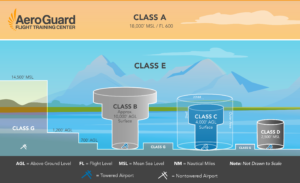Airspace Classes: How Are They Defined?
Each day, thousands of planes fill the sky. Have you ever wondered how all of this air traffic activity is managed and works together, or how pilots understand where they can and can’t fly? Read on!
The Federal Aviation Administration (FAA) developed the National Airspace System to facilitate daily flight traffic, dividing the atmosphere into three-dimensional portions, known as airspace classes.
Understanding how the Federal Aviation Administration separates airspace is a key component in developing your skills as a pilot. The four primary categories of airspace are: controlled, uncontrolled, special use and other.
Across AeroGuard campuses, pilots have access to both controlled and uncontrolled airspace. Practicing in varying airspace gives students learning opportunities to help them increase their knowledge and become well-versed aviators.
Though this may seem a bit overwhelming, don’t fret! We’ll be examining just how the FAA classifies airspace – using the ABCs!

Controlled and Uncontrolled Airspace Classes
Controlled airspace is airspace of certain dimensions in which Air Traffic Control (ATC) services are available. Class A, B, C, D and E airspace are considered controlled airspace. How are each of these defined?
Class A airspace
is the enroute airspace for jets and turboprop aircraft. It’s located everywhere above 18,000 feet up to and including 60,000 feet. To fly in this airspace, the flight must be operated under Instrument Flight Rules (IFR).
Class B airspace
is custom constructed to meet the needs of the nation’s
busiest airports. Class B airspace includes a surface area and two or more layers, some resembling an upside-down layered cake. It typically extends to nearly 10,000 mean sea level (MSL), and clearance is required for all aircraft to fly in this type of airspace.
Class C airspace
has a standard shape and size, that can be modified if necessary to fit the needs of each airport. It typically extends from the surface to 4,000 feet above the airport elevation. Although the configuration of each Class C area may be individually tailored, the airspace usually consists of a surface area with a five-mile radius. This is similar to a layered cake, like Class B, but it’s only two layers. This second layer, called the shelf area, typically extends 10 miles from the airport in either direction. Two-way radio communication must be established with ATC prior to entering the airspace and typically occurs in the outer area because it has radar services. That outer area extends to a 20-mile radius.
Class D airspace
is also designed to fit the needs of each specific airport and normally extends from the surface up to and including 2,500 feet above the airport elevation. Class D airspace only has a surface area, no shelf or outer area for radar surfaces. Unless otherwise permitted, two-way radio communication must be established with ATC prior to entering the airspace and then maintained while flying in Class D airspace.
Class E airspace
is the controlled airspace not classified as Class A, B, C, or D airspace. Class E airspace starts at various altitudes, but always exists above 14,500 feet.
For any airspace that hasn’t been designated as controlled, as described above, it is considered uncontrolled, and is known as
Class G airspace.
Special Use and Other Airspace Classes
Special Use Airspace (SUA) is a designated area in which activities must be confined because of their nature, where limitations may be imposed upon aircraft not part of those activities, or both. Regulatory SUA includes Prohibited and Restricted Areas. As an example, the airspace over the White House is considered Prohibited. Non-Regulatory SUA incorporates Warning Areas, Military Operating Areas, Alert Areas and Controlled Firing Areas.
Other Airspace classifications are used to denote certain procedures or services. Examples of these would include parachute jump aircraft operations, published VFR routes, terminal radar service area, local airport advisory, military training route, temporary flight restriction, etc.
Airspace Classes and AeroGuard
AeroGuard’s varying campus locations provide students with a healthy mix of airspace for pilots to expand their knowledge and develop into strong aviators, no matter which campus you choose. Let’s take a look at each of AeroGuard’s campuses and the different airspace training opportunities that are available.
Deer Valley Airport
The Phoenix location at the Deer Valley Airport (KDVT), one of the busiest airports in the world, provides pilots with Class B – E and Class G airspace. Sky Harbor, about 15 miles outside our campus, is the main commercial airport in Phoenix, providing Class B airspace, plus with 18 of the 92 local airports being tower controlled, this allows students to obtain more exposure to different ATC facilities.
Chandler Municipal Airport
AeroGuard’s Chandler Location at the Chandler Municipal Airport (KCHD) is located on the south side of the Phoenix metropolitan area, so pilots are similarly exposed to a mix of controlled (Class B – E) and uncontrolled (Class G) airspace. KCHD is located 14 miles outside of Phoenix Sky Harbor, comprised of Class B airspace, plus 18 local tower-controlled airports. The diverse airspace allows for AeroGuard pilots to maximize their aviation skill.
Punta Gorda Airport
Within a 100-mile radius of AeroGuard’s Fort Myers, FL location at the Punta Gorda Airport (KPGD), there are multiple Class B and Class C airspace airports as well as over ten Class D airspace airports and multiple Class E airspace airports. KPGD’s control tower is in operation for most of the day, allowing students to experience Class D airspace as well as some airline operations. When the control tower is not in operation, students have the opportunity to experience Class E airspace.There are many different airspaces for pilots to fly in, from the Gulf of Mexico to the Atlantic.
Georgetown Municipal Airport
AeroGuard’s Austin, Texas flight school at
the Georgetown Municipal Airport (KGTU) is located about 30 miles outside Austin and provides two Class B airspace shelves,
eight Class D
and two Class C airports
within 30 miles of the flight school, providing AeroGuard pilots with real-world experience. The KGTU airport itself is tower controlled, Class D,
and offers a great location, as it is surrounded by diverse airspace that allows for pilots to operate at a variety of airports.
Interested in learning more about different airspace classes and experiencing them first-hand? Contact us today and begin your aviation journey!

